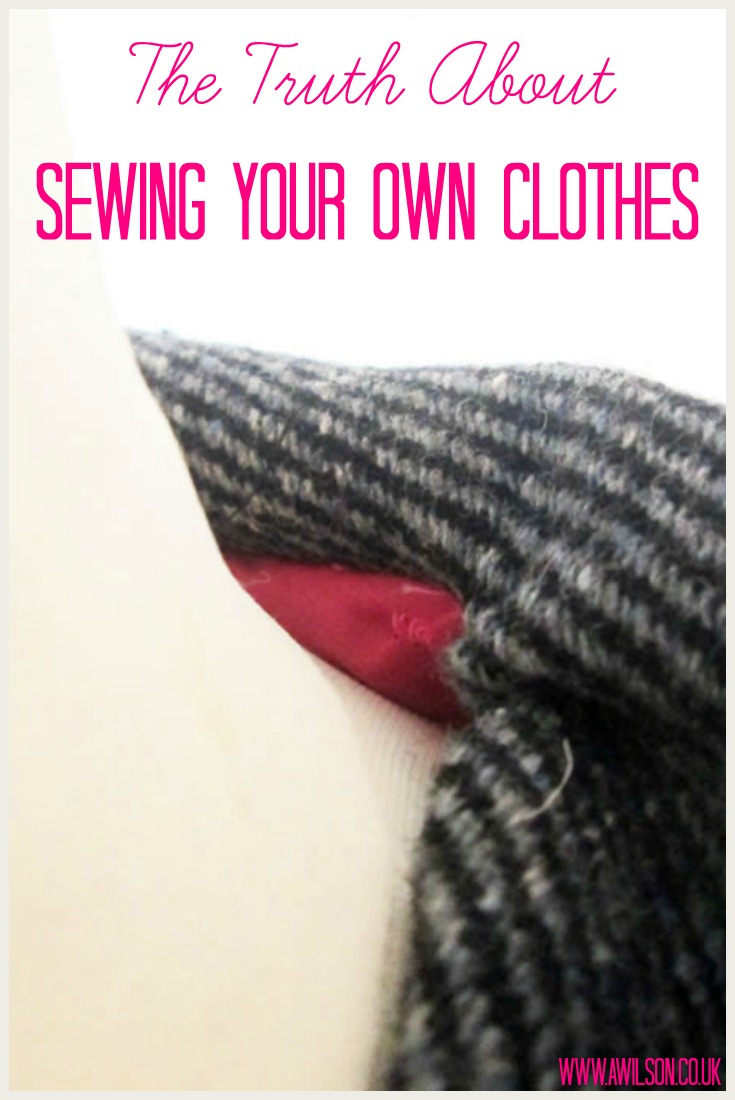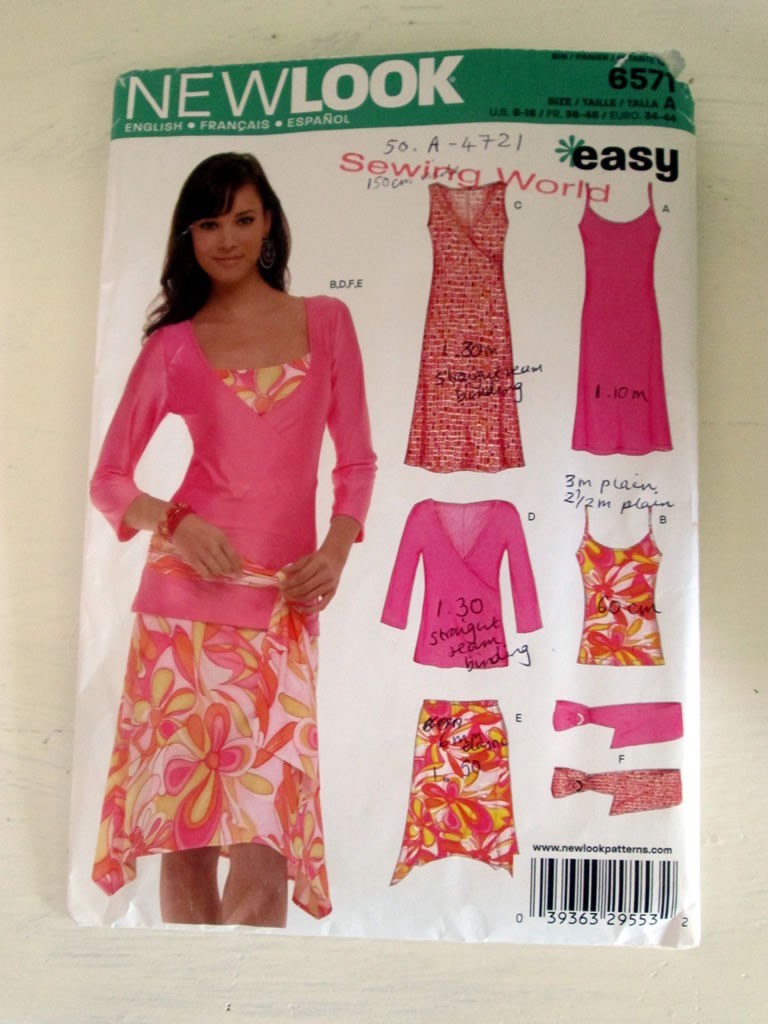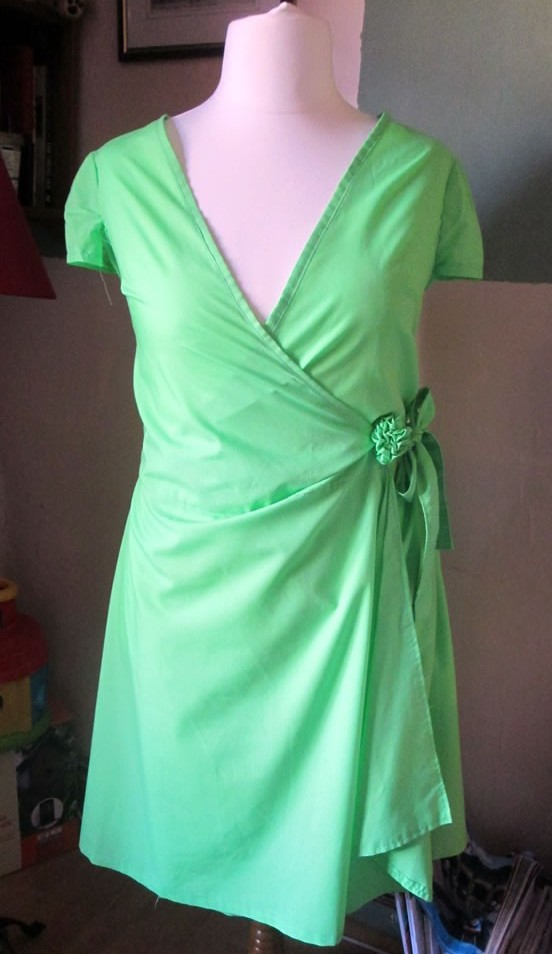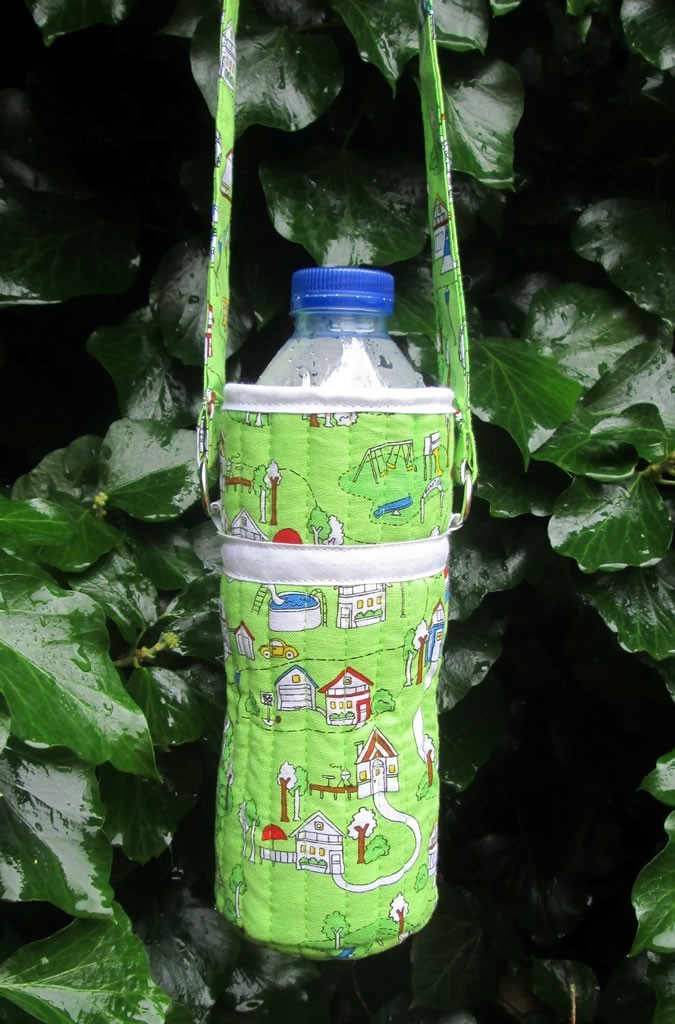The Truth About Sewing Your Own Clothes
Sewing your own clothes is a lot of fun. I have been making clothes for myself since I was 10, both with using a pattern and without one.
Things don’t always go perfectly to plan! In this post I am going to share with you some of the truths I have found out about sewing your own clothes.
1. The sizes on the pattern bear no relation to actual dress sizes. The key thing here is to check your measurements against the measurements on the back of the pattern envelope before buying the pattern. I have made this mistake myself and bought a pattern that went up to UK dress size 14 assuming it would be ok. It was not. I had to let the seams right out, abandon the darts and patch an extra piece in at the front. Yes it’s a little depressing to have to buy something in a size 20 when you’re usually a size 14, but at least you’ll end up with something that actually fits. Which is the point, right?
2. You have to keep trying it on. You really do. Even if you have checked your measurements and adjusted the pattern. The pattern will have been made with a particular body shape in mind and yours might be different. Obviously this is even more necessary if you are not using a commercial pattern.
3. The thread you use matters. I would say Gutermann all the way (affiliate link). Some cheaper threads are fine to use, some are really not. If you are unsure, take a look at the thread. The Gutermann ones are perfectly smooth and even. The cheaper ones often are not. I had some thread that was awful, noticeably thicker in places and thinner in others. What ends up happening is that where it is thicker, it snags, and where it is thinner, it is more likely to break. This means having to rethread your sewing machine a bazillion times because the thread keeps breaking, which is very annoying. It can also result in uneven stitches.
4. You probably won’t use most of the stitches on your sewing machine. I use the straight stitch, the overcasting stitch, a couple of the button holes and the stitch for knits. That is pretty much it. My sewing machine does dozens more that I never use. So when buying a sewing machine, this is something to consider.There’s no point in paying for a machine that has lots of stitches if you only use a few. If you were thinking of buying a fairly basic sewing machine, Hobbycraft are selling this Janome machine with £20 off at £69 (affiliate link).
5. Sometimes things go wrong. It’s just one of those things. It happens even to people who are experienced in sewing. Which leads me onto the next one!
6. Sometimes mistakes can be fixed. This is where having an unpicker comes in handy! Just undo it and have another go.
7. Sometimes mistakes can be disguised by adding a ruffly flower. This is what I did with this green dress. It was the first time I’d made something without a pattern and the bit on the front with the hook, where the bodice meets the skirt at the edge, was a bit of a mess. The ruffly flower hides the messy bit and adds a pretty detail!
8. Sometimes a project can’t be rescued. I don’t have many things that go horribly wrong because I either unpick the mistake or disguise it! Sometimes, however, a mistake is neither fixable nor possible to hide. In that case, it goes back on the fabric pile and gets reused in another project. The carseat cover fiasco is an example of this. There was no fixing that. So off it went upstairs, and last summer I turned a chunk of it into a water bottle holder.
9. Stretchy fabric can be difficult to work with, but some are easier than others. The best stuff is thicker cotton jersey. This stretches enough but also holds its shape well, making it easier to sew than other knits. Just make sure you use the right stitch (a zigzag will do if your sewing machine doesn’t have an actual stitch for knits) and try not to pull on it while you’re sewing.
10. Zips are easy to put in if you do them the easy way, not the proper way! The easy way to put in a zip is to sew up the seam and press it open. Then pin the zip over the seam, face down on the wrong side. Tack in place, making sure that the teeth are lined up with the seam. Sew it all the way round, take out the taking stitches and unpick the seam that is covering up the zip. Perfect results every time! For more detailed instructions for how to do this, visit this tutorial here.
11. Darts are also not scary. A dart is simply a triangular shaped fold in the fabric that gives something a bit more of a shape. The best way to work out where the darts need to go is by pinning somtehing to yourself and just seeing where there is extra fabric that needs to be taken in.
12. Making clothes without a pattern is completely possible providing you keep it simple. It’s the same as baking a cake. It’s easy if you know what you’re doing and you can change things up a bit. A good place to start is a circle skirt as they are super easy!
If you want to sew clothes without using a pattern, you might like my ebook!


I took a sewing class before and its so complicated. Thanks for demystifying some aspects of it!
Thanks Erin 🙂
It is feasible to make your own clothes. I make most of what I wear. I am able to buy over runs of good fabrics for great prices. Most of my dresses cost me less than $5 in fabric and take about 30 minutes to make.

urbanplus recently posted…5 Best Swimsuits To Hide Belly Pooch – Feeling Confident
Wow, I don’t I think I could make anything in half an hour! There’s all the tea breaks apart from anything 🙂
Great post. Really good advise. Thanks for sharing!
Thank you!
I’d never heard of these until I saw them on the sewing B. It seems quite a lot of people use them. I’m stuck in the 60’s, 70’s when everyone used small pins. These look so cute.
Thank you 🙂 I learnt lots from the GBSB!
I couldn’t agree more with all of these! And I also don’t use one tenth of the stitches in my sewing machine, but least I got it cheap…Thank you for sharing at The Really Crafty Link Party! pinned!

Teresa recently posted…Guest blogging @ 2 Crochet Hooks Today!
Thanks 🙂
Great advice, I’d love to make clothes for Lucy but have only made a few simple skirts so far.
Skirts are fine 🙂 And it’s easy to turn a skirt into a dress, especially for children as they’re an easier shape!
Great points, especially #7. I used to sew a lot for my daughter when she was a baby, and there are lots of ruffles and flowers! Thanks for sharing at Submarine Sunday!!

Navy Wifey Peters @ USS Crafty recently posted…Submarine Sunday Link Party #159
Who’d have thought they would be so useful? 🙂
This is all so true! You’d think that they’d offer a modern day equivalent size chart on new patterns to avoid the confusion. I completely agree on the thread problem. Cheap threads just mean time lost rethreading and unpicking birds nests! I quite like moon threads. I love your ruffle flower rescue! Appliques work well too especially if unpicking has left a hole!

Linda recently posted…Comment on Pillowcase Tutorial With French Seams by Sewing Bee Fabrics
I’ve not tried moon threads, I’ll have to have a look 🙂
Applique is a good idea for hiding dodgy patches, I’ll remember that 😉